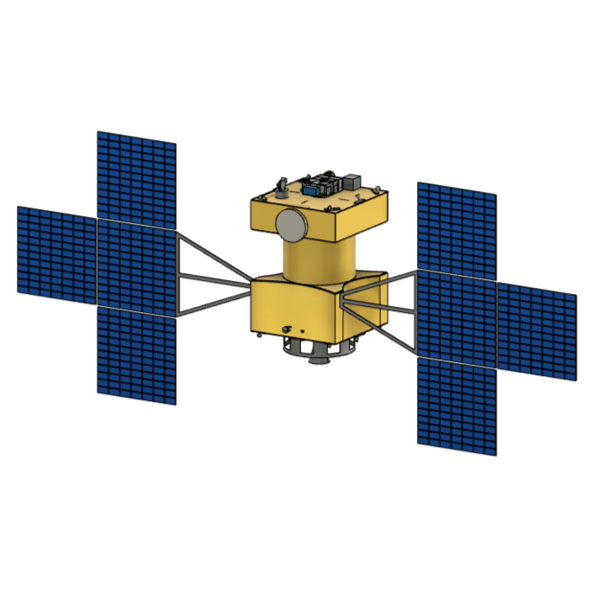Back to List
Deep Space Orbit Transfer Vehicle

本提案では,深宇宙航行,目的天体への到達までを担う標準的な輸送システムDSOTV(Deep Space Orbit Transfer Vehicle)により輸送のパラダイムシフトを提唱している.ヘリテージ技術を活かした共用性の高いDSOTVが深宇宙航行を確実に,目的地に到着後の挑戦的な探査は「超小型機」が担うミッション形態を提案する.
This proposal advocates a paradigm shift in transportation with a standard transportation system, DSOTV (Deep Space Orbit Transfer Vehicle), which is responsible for deep space navigation and reaching the target celestial body. We propose a mission form in which DSOTV, which is highly shared and utilizes heritage technology, ensures deep space navigation, while "ultra-small vehicles" take care of challenging exploration after arriving at the destination.
Abstract
近年,宇宙開発においてさまざまなトレンドが起きている.一方では,再利用性を追求し,宇宙へのアクセスを繰り返し可能にするシステムを設計しようとする動きがある.他方では,様々な天体への単発のミッションや,密接に関連したミッション(はやぶさや先に述べたはやぶさ2)が数多く行われている.このような傾向が拡大し,より新しいミッション(OKEANOS,DESTINY +)が開発されるにつれて,深宇宙探査ミッションのための低コストの経常的なアーキテクチャとその可能な利点についての疑問が,しばらくの間,宇宙科学研究所とJAXAで議論されてきた.当研究室は,これらのトピックに関連するいくつかの新しい宇宙アーキテクチャの背後にある主要な提案者である.
最近研究されているアーキテクチャのひとつが,いわゆる深宇宙軌道遷移機(DS-OTV)である.深宇宙軌道遷移機(DS-OTV)は,地球近傍に配置される宇宙船で,探査ミッションがランデブーしてドッキングし,燃料を補給して,地球スイングバイの可能性も含め,主目的に向かって継続することを可能にする.このアーキテクチャの利点は,連続するミッションの打ち上げ時の質量が小さく,イプシロンや将来のH3のような小型で低コストのロケットを使用できること,打ち上げウィンドウの可用性が高いこと,遅延や不測の事態に対する柔軟性があることである.パーキング軌道の設計は非常に重要であり,低い静止維持コストを維持しながらアクセス可能である必要がある.
応用に重点を置いた研究室として,私たちは宇宙ミッション設計の全体像にも関心を持っています.そのため,私たちの研究には,私たちの発見を紹介するミッション全体の設計を含め,私たちのアイデアやコンセプトの適用性に関する研究が常に含まれています.これにより,私たちの研究は現実に根ざしたものとなり,私たちの斬新なコンセプトを迅速に反復し,短時間で実際のミッションに組み込むことができるのです.この哲学は,津田教授と研究所の基本的な信条のひとつであり,研究所のメンバーや共同研究者による歴史上最も重要な日本の宇宙ミッションの設計,建設,運用を可能にしてきた.
In recent years, different trends in space development are occurring. From one side, there is a push for re-usability and to design systems that enable repeatable access to space. On the other side, there have been numerous one-off missions, as well as closely related missions (Hayabusa and the previosly mentioned Hayabusa 2) to various celestial bodies. With the expansion of these trends and the developing of newer missions (OKEANOS, DESTINY +), the question about a low-cost recurring architecture for deep space exploration missions and its possible benefits has been debated in ISAS and JAXA for some time. Our laboratory is the main proponent behind some new space architectures related to these topics.
One of the most recent architectures being studied is the so-called Deep Space Orbit Transfer Vehicle (DS-OTV). The Deep Space Orbit Transfer Vehicle (DS-OTV) will be a spacecraft placed in the Earth’s vicinity that will allow exploration missions to rendezvous and dock with it, re-fuel, and continue towards their main objective, including a possible Earth swing-by. This architecture benefits from lower mass at launch for the successive missions, allowing for smaller and lower-cost launchers like the Epsilon or the future H3 to be used, higher availability of launch windows and flexibility against delays and unforeseen circumstances. The design of its parking orbit is crucial, as it needs to be accessible while keeping low stationkeeping costs.
As an applied-focused laboratory, we are also concerned with the holistic view of space mission design. As such, our research always includes studies on the applicability of our ideas and concepts, including the design of whole missions that showcase our findings. This keeps our research grounded in reality and allows for our novel concepts to be iterated quickly and included in real life missions in a short amount of time. This philosophy has been one of the basics tenets of Prof. Tsuda and the laboratory, allowing for the design, construction and operation of some of the most important japanese space missions in history by our members and collaborators.